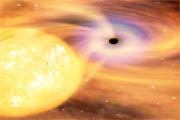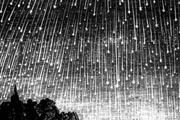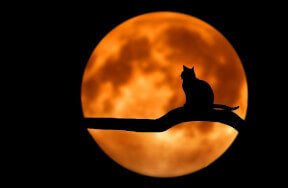April brings us the Lyrid Meteor Shower, April 16th to the 26th, with the peak occurring on April 22nd!
Three things you should know about observing the Lyrids:
- The Lyrid meteor shower for 2011 is set to occur from April 16 to April 26
- The Lyrids move rather fast. When you see a meteor, mentally trace it backwards. If you end up at the constellation Lyra then you have probably seen a Lyrid meteor!
- Astronomers are predicting that at its peak hours (on the 22nd, in the United States), the Lyrids should produce about 15 meteors per hour. On April 21st and 23rd, the Lyrids should produce about 5 per hour. These dates may be a day off depending on where in the world you are located.
 Lyrid Meteor Shower
Lyrid Meteor Shower
How can I best view the Lyrids meteor shower?
The Lyrids are the second major meteor shower of the year, but it is not one of the strongest. But but it can still be enjoyable to those who are interested in meteors or just want to see a fun show in the night sky with your family and friends. This annual Spring shower is recognized as an irregular shower, with rates that vary depending on the year. Like all meteor showers, the Lyrids are caused by the Earth passing through the dust particles of a comet. In Lyrids case, this comet is Thatcher (C/1861 G1).
The 2011 Lyrids are active from April 16th through April 25th and reaches its peak, the moment when the most meteors can be seen, on April 22nd. The peak is defined as the moment of maximum activity, and this number is expected to range from 10 to 20 Lyrid per hour if conditions are ideal. Unfortunately for observers eager to for a dark sky this year, the Waning Gibbous moon will create a difficult viewing experience due to its bright moonlight washing away all but the brightest Lyrids. This makes their 2011 performance a spectacle for mostly amateur and professional astronomers; however, enthusiastic star gazers willing to wait it out under the night sky for several hours may be lucky enough to catch several of the brighter Lyrids.
The radiant of the Lyrids, also known as the point from where the meteors appear to come from, is situated within the constellation Lyra. Not coincidentally, the Lyrids are named after this constellation. To find the location of the radiant, we recommend you find Vega, a hard-to-miss star identified as the brightest star in the constellation Lyra and one of the brightest stars in Earth’s night sky (it’s the fifth brightest in the night sky and the second brightest star in the Northern Celestial Hemisphere).
On average, and under clear skies, observers should see 10 to 20 meteors per hour but very rarely these rates can exceed up to 100 meteors per hours due to extremely rare outbursts. In the best conditions, the Lyrids meteor shower will put on a slow show for those willing to stay out and watch.
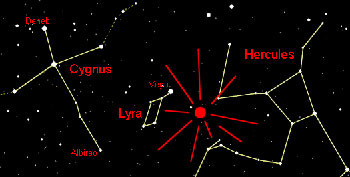 Lyrid Meteor Shower
Lyrid Meteor Shower
About the Lyrids
These meteors are among the oldest known, with ancient records of them dating back nearly 27 centuries. The Lyrid meteor shower is also the first significant meteor shower to appear since the beginning of the year. While it won't produce a storm of meteors, it's a respectable show for those who are patient.
The Lyrids are an annual display of fairly fast meteors that may be seen any night from April 16 to 25: they are above one-half of their maximum in numbers for about a day or two centered on the date of their peak activity.
Where and when to look
Watching for meteors is easy. Find a dark place away from lights as much as possible. The predawn hours are best, because that's when the part of Earth you're standing on is facing the oncoming stream of debris — mostly sand-grain-sized particles — that make the meteor shower.
Lie back, look up, and scan as much of the sky as possible. The meteors could appear anywhere. Give your eyes at least 15 minutes to adjust to the darkness. You can distinguish a Lyrid from any other meteors seen around the same time by noting that its trail points back to near the dazzling blue-white star Vega.
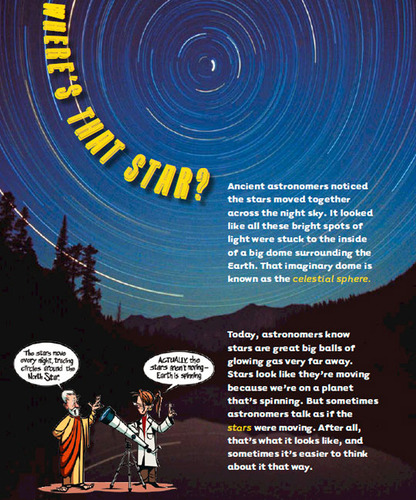
Want to learn more about our Galaxy?
Check out THE KLUTZ GUIDE TO THE GALAXY to explore the universe without leaving the comfort of your backyard. When the scientists at Klutz Labs tackle outer space, we not only ask questions like “Where’s the Big Dipper” but also “If I lived on planet Mercury, am I already old enough to drive?” Use the included telescope, red light for night use, sundial, and astrolab to start exploring our great galaxy.





























